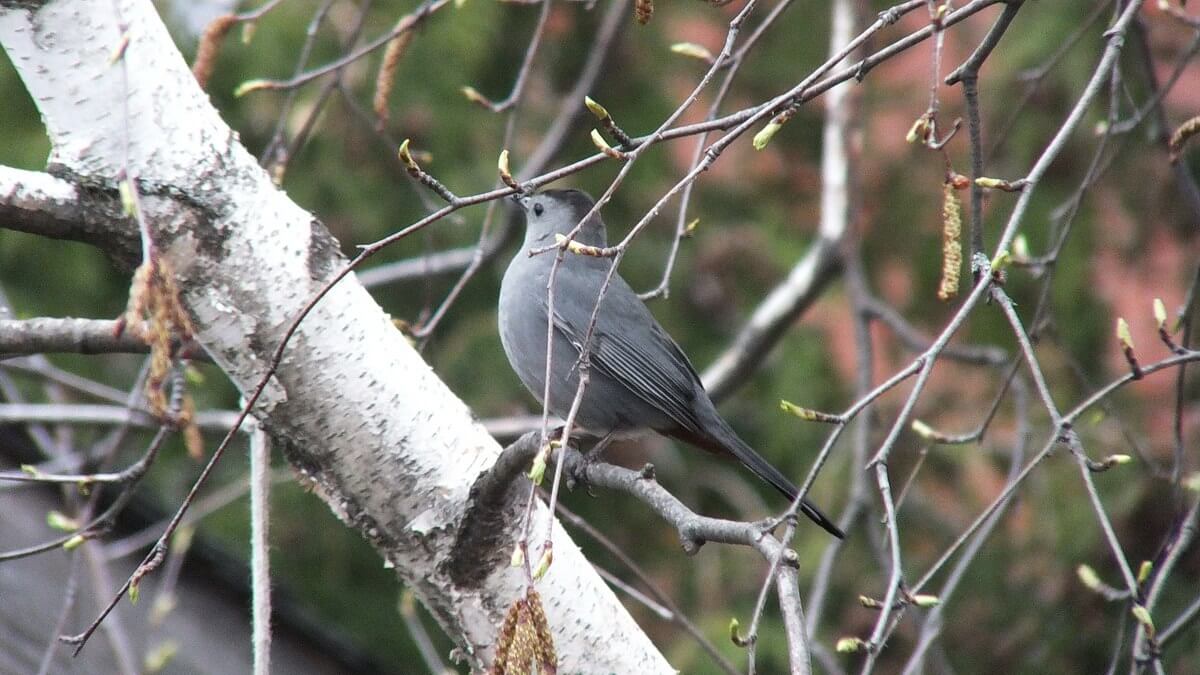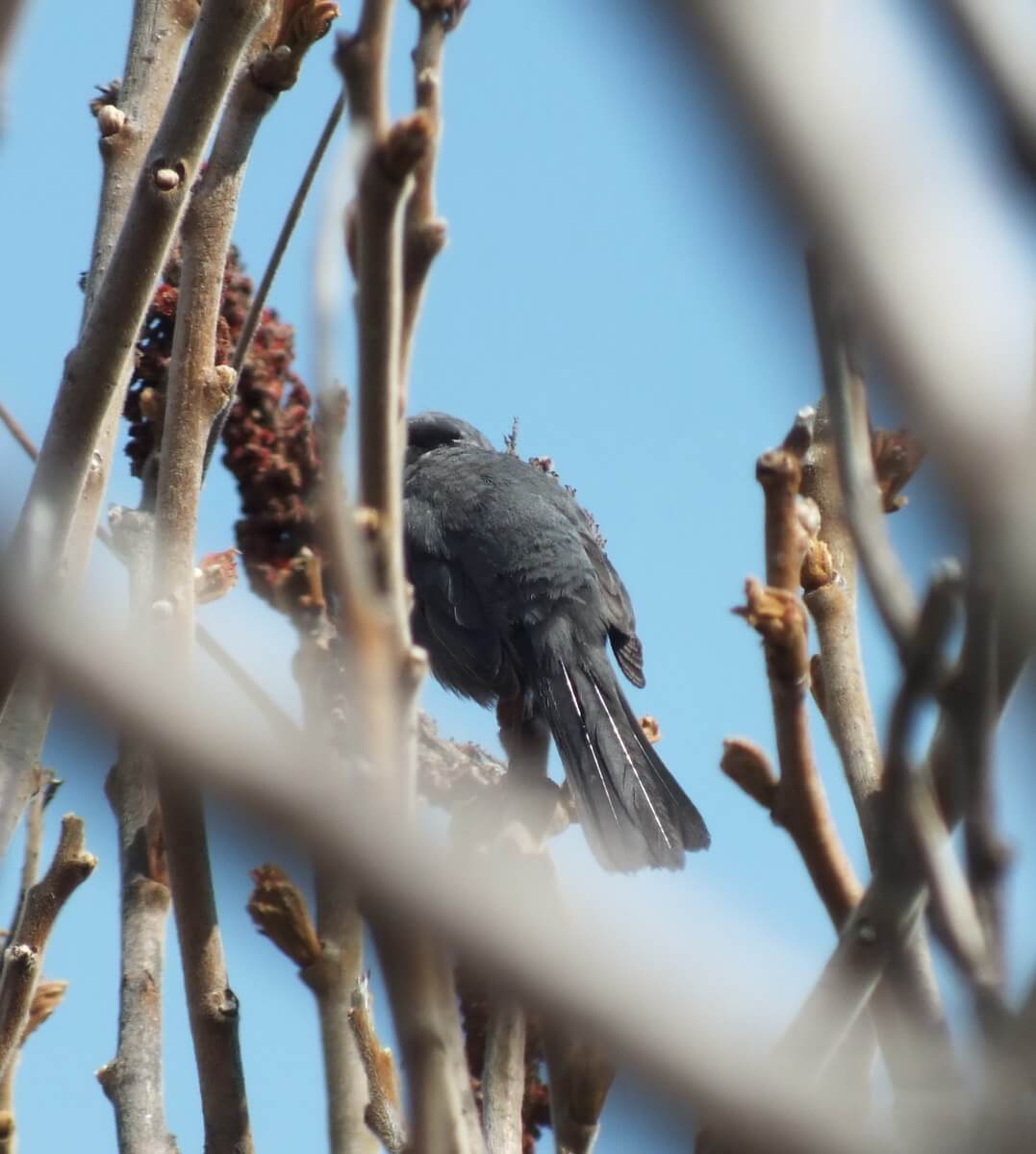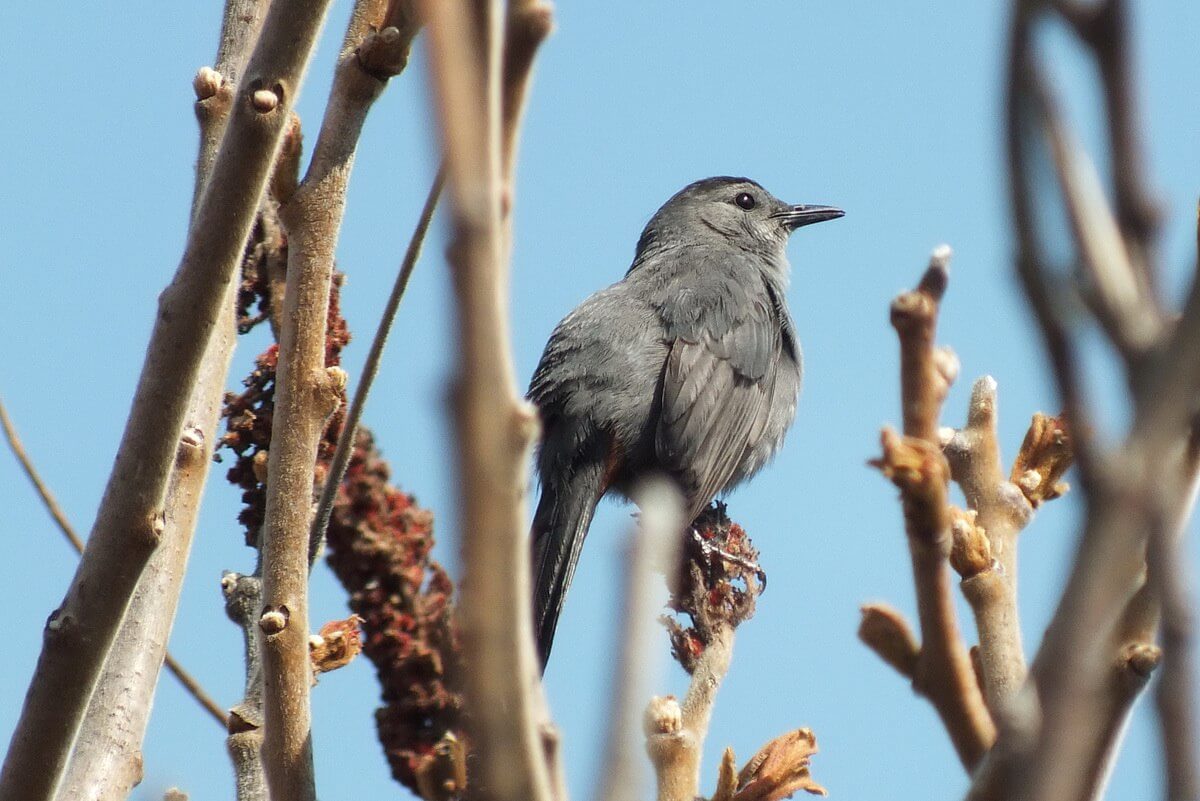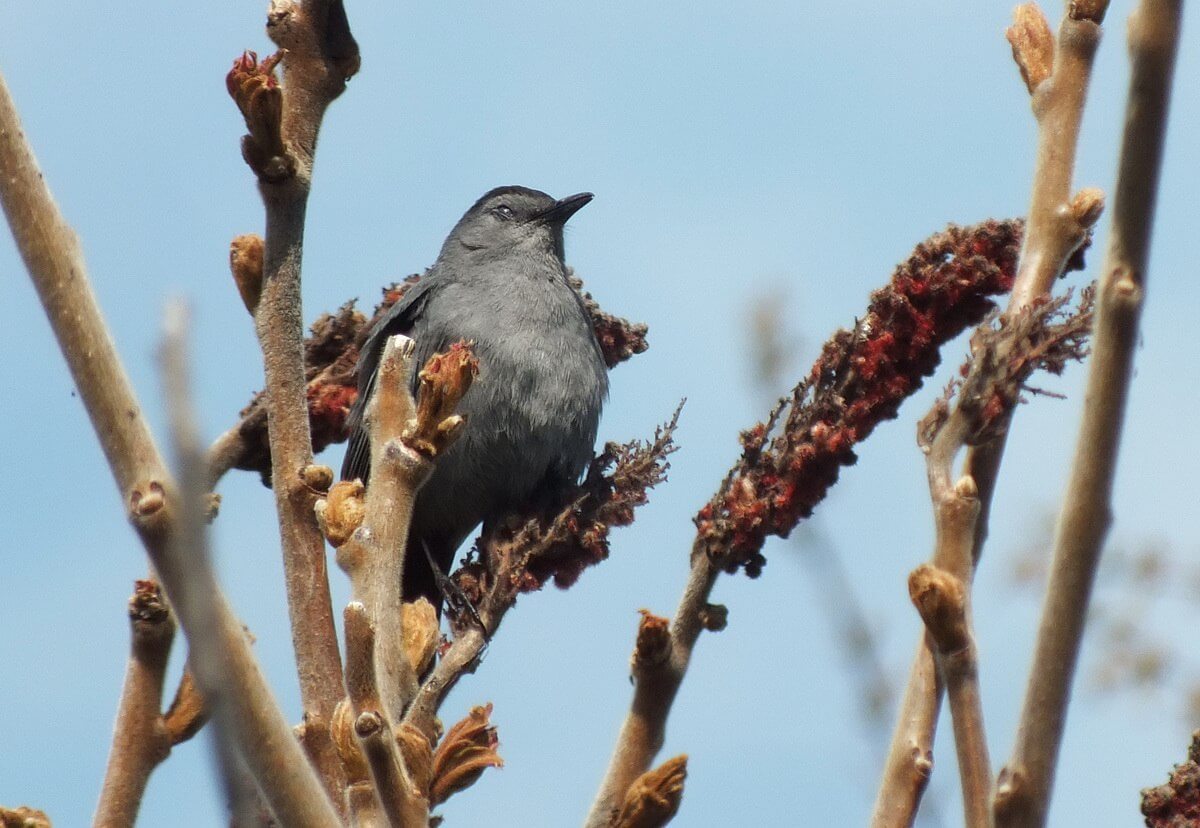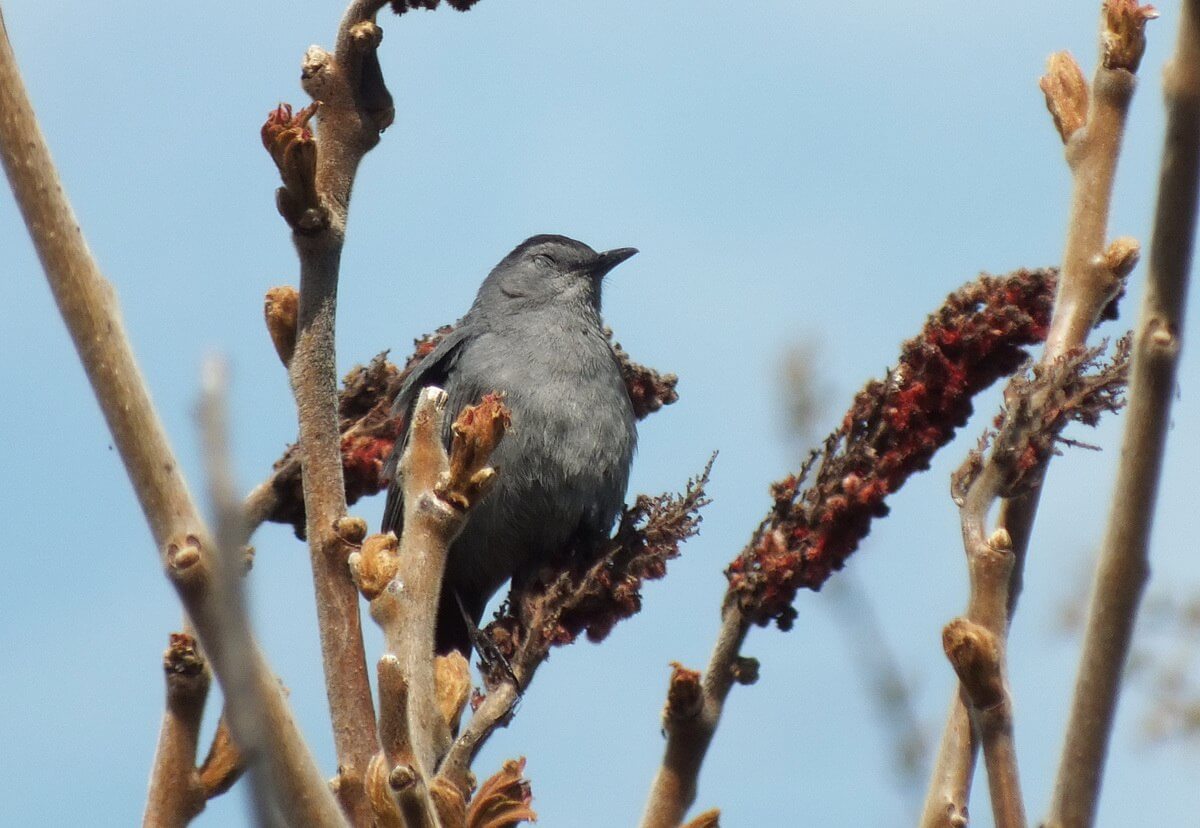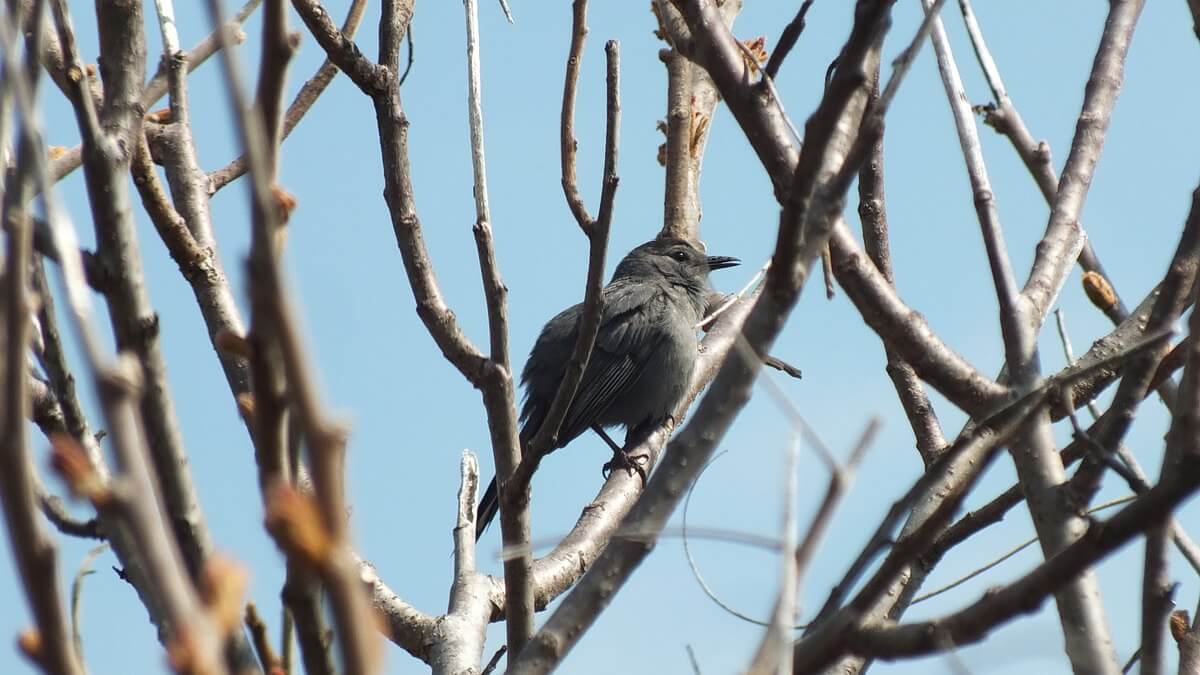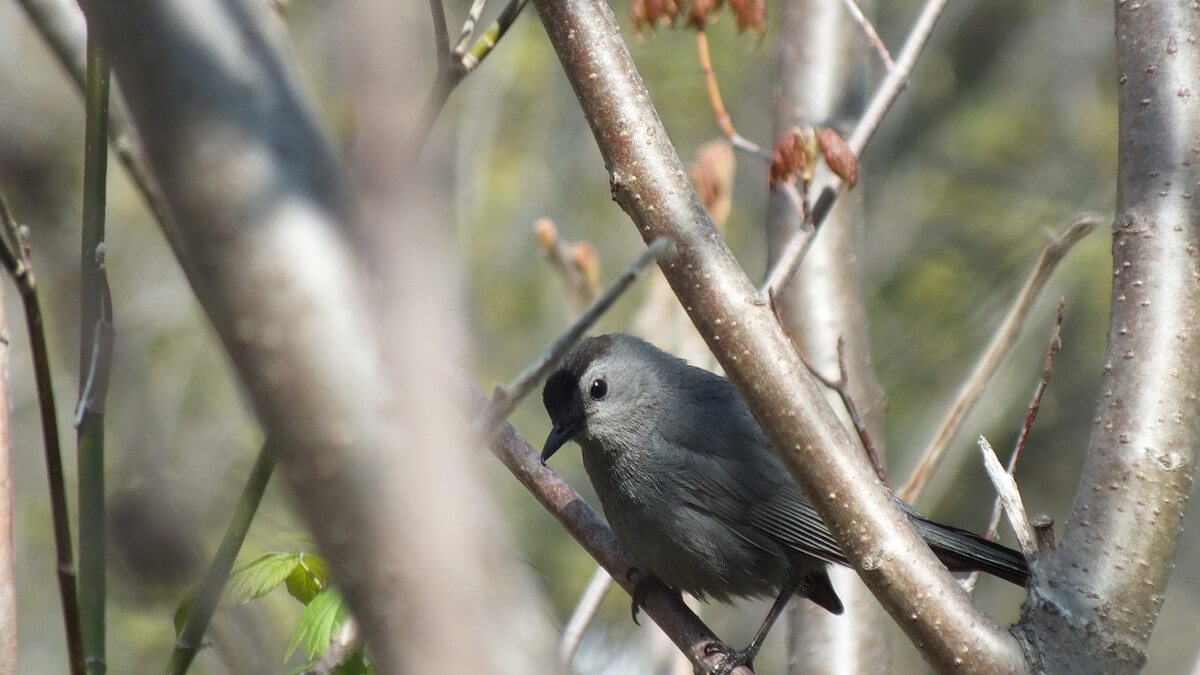Grey Catbird At Ashbridge’s Bay Park In Toronto
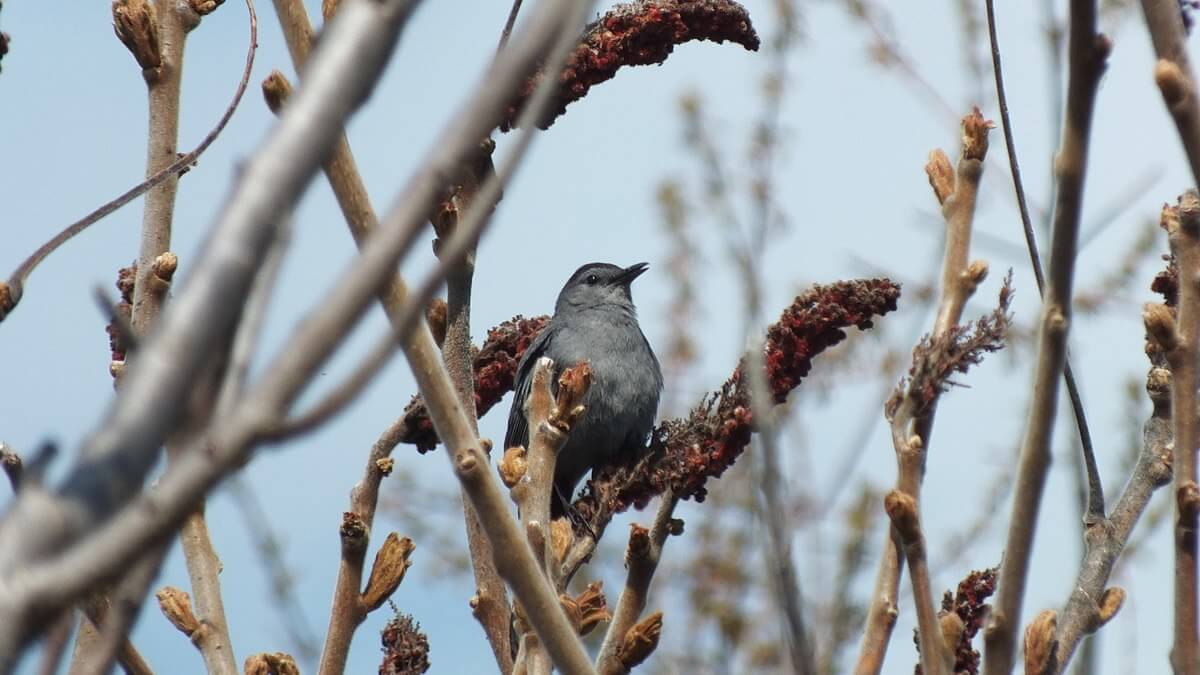
At the peak of bird migration this past spring, Bob and I headed to Ashbridge’s Bay on the Lake Ontario waterfront in the hopes of sighting a variety of bird species all in one go. Reports had been pouring in about the large numbers of warblers and other songbirds seen there over the previous week, fresh from their flight across the wide expanse of the smallest of the Great Lakes, Lake Ontario. At its maximum width, the lake is 53 miles (85 km) across. Amongst several bird species that we photographed that day was this Grey Catbird (Dumetella carolinensis).
Bob and I were up and out early that morning, so when we set off from the parking lot next to the Martin Goodman Trail, the dew was still heavy on the grass, and horizontal beams of sunlight gently bathed the trees where they stood on the fringe of a grassy area. It was actually closer to midday, as we made our way back to the car, that we spotted a Catbird in a small stand of Staghorn Sumac (Rhus typhina). The Catbird was blissfully singing in the noonday sun.
A week or so earlier, late one afternoon, a Grey Catbird landed briefly in our birch tree at home. I immediately recognized it from pictures that someone had posted to The Weather Network, which I peruse daily to keep abreast of bird sightings across the country. That Catbird moved to my water fountain for a drink, but something spooked it, so the only decent photo I got was this one above.
Nestled in amongst the sumac that stretched along the walkway, the Grey Catbird at Ashbridge’s Bay felt quite protected and ignored the handful of photographers and passersby that were seduced by its song. The Catbird’s Latin name, Dumetella, loosely translated means small thornbush dweller, which aptly describes these birds that routinely sing while hidden in undergrowth.
A Catbird’s song imitates a cat’s meow, but these birds also mimic other bird songs as well as the chirping of tree frogs and even mechanical sounds. Once heard, you will always remember their call, and it is easy to track them by following their vocalizations. Most songbirds will sing from an obvious perch rather than an obscure position in amongst tangled vines; Catbirds opt for obscurity and prefer to be hidden by foliage.
Grey Catbirds are a dull slate grey, slightly paler on the underparts, with a recognizable black cap, blackish tail and chestnut-coloured feathers under the tail. They are the only birds in North America to have uniformly dark grey plumage. These birds are related to Mockingbirds and Thrashers, both of which share the vocal talents of Catbirds. Grey Catbirds are chunky birds that are smaller than American Robins but with longer tails.
As Bob and I circled the thicket of sumac bushes, the Catbird hopped from branch to branch, moved onto the ground and then regained a perch near the top of one of the sumac. There is no way to differentiate between male and female Catbirds save for their behaviour. Since males during breeding season make it a habit to sit atop shrubs and small trees when singing, it might be safe to assume that the bird we saw was a male.
When the Catbird lit amongst the leaf litter at the base of the sumac shrubs, it promptly began foraging for food by using its beak to upend twigs and leaves in search of whatever insects might lay below. A variety of insects would suit the bird’s palate, bugs such as beetles, spiders, aphids, ants, and the dreaded gypsy moth, to name a few. Catbirds are omnivores and also consume berries and fruits, preferably those that have fallen to the ground, during late summer and into the fall.
It is common to see Grey Catbirds across south-central and western Canada all the way south to New Mexico and the Gulf States of United States, even Bermuda, during breeding season. They avoid areas of dense woodlands and coniferous forests preferring, instead, areas with dense low vegetation such as that found in scrublands, long-forgotten orchards, and edges of woodlots. You will seldom see a Catbird fly directly across an open area as they are more apt to take brief, low flights between bushes. This Grey Catbird did move off from the sumac to an adjacent tree, and that is where we left him when we excused ourselves for a lunch break. Upon our return, it was nowhere to be seen.
Frame To Frame – Bob and Jean


